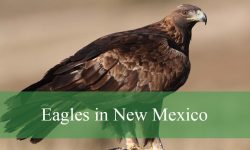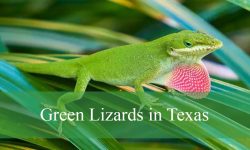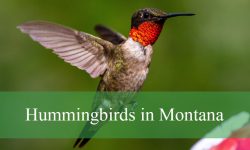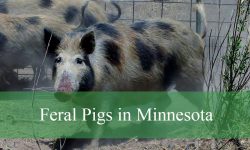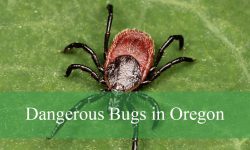New Jersey offers a rich and colorful birding experience, especially with the presence of stunning blue birds in New Jersey. These birds stand out with their vibrant feathers and are frequently seen across woodlands, wetlands, and even suburban neighborhoods.
Many birdwatchers enjoy spotting blue birds in New Jersey during spring and summer when migration and breeding activity are at their peak. Their bright colors, distinct songs, and energetic behavior make them easy to recognize and a joy to observe.
This article explores 16 striking blue birds in New Jersey, complete with pictures, identification details, and habitat information. Learn how to spot them in the wild, understand their habits, and appreciate their beauty across the Garden State.
Common Blue Birds Found in New Jersey
Eastern Bluebird (Sialia sialis)
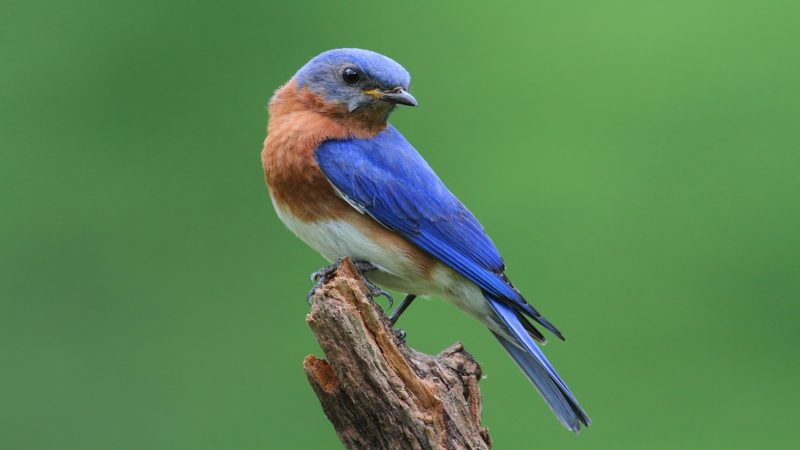
The Eastern Bluebird is a small thrush known for its vibrant and eye-catching coloration. Males display bright blue feathers on their head, wings, and back, paired with a rusty red chest and white belly, while females have more subdued blue-gray tones with a softer reddish wash on the breast. Typically, they measure about 6 to 7 inches in length, making them relatively small but unmistakable due to their brilliant coloring.
In New Jersey, Eastern Bluebirds favor open habitats such as fields, meadows, and forest edges where they can easily spot insects and berries. They nest in natural cavities or nest boxes, which have been widely used in conservation efforts. Their diet mainly consists of insects like beetles, grasshoppers, and caterpillars, supplemented with fruits and berries during colder months.
Thanks to active conservation programs including the installation of nest boxes throughout New Jersey, Eastern Bluebird populations have been steadily increasing. These efforts help provide safe breeding sites and protect them from habitat loss. Birdwatchers often spot them perched on fence posts or wires in rural and suburban areas, making them a beloved sight in the region.
Blue Jay (Cyanocitta cristata)
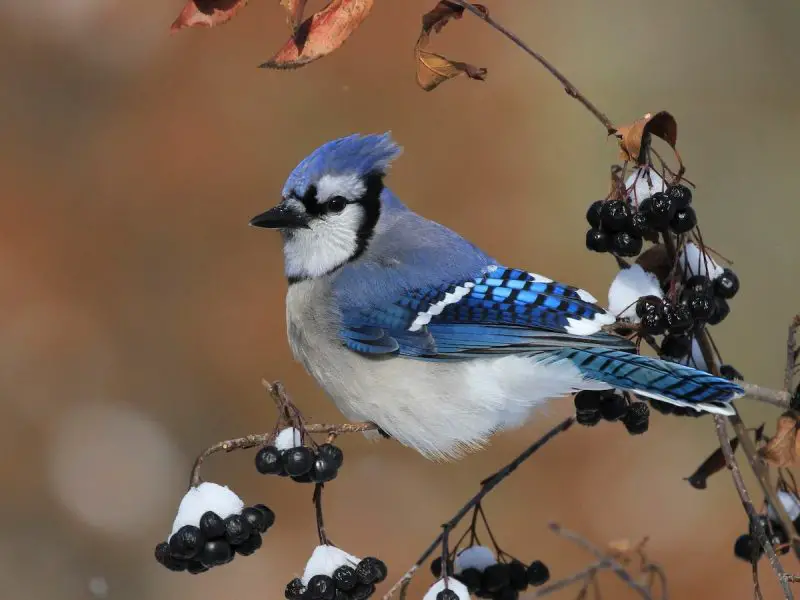
The Blue Jay is a medium-sized songbird notable for its striking blue and white plumage, complemented by a distinctive black “necklace” marking around the throat and a prominent crest on the head. They measure approximately 9 to 12 inches long, with strong bills and feet. Their bold coloration and noisy calls make them very recognizable in New Jersey’s woodlands and urban areas.
This species thrives in diverse habitats including forests, suburban neighborhoods, and city parks. Blue Jays are highly adaptable and intelligent birds known for their complex social behaviors, such as caching food and mimicking the calls of hawks to warn or deceive other birds. They are often seen gathering acorns and nuts, which they store for later consumption.
Blue Jays’ omnivorous diet includes insects, nuts, seeds, and occasionally small vertebrates or eggs. Their loud and varied vocalizations make them a common sound in New Jersey’s woodlands. Their boldness and curiosity often bring them close to human activity, adding a splash of vibrant blue to the local bird life.
Indigo Bunting (Passerina cyanea)
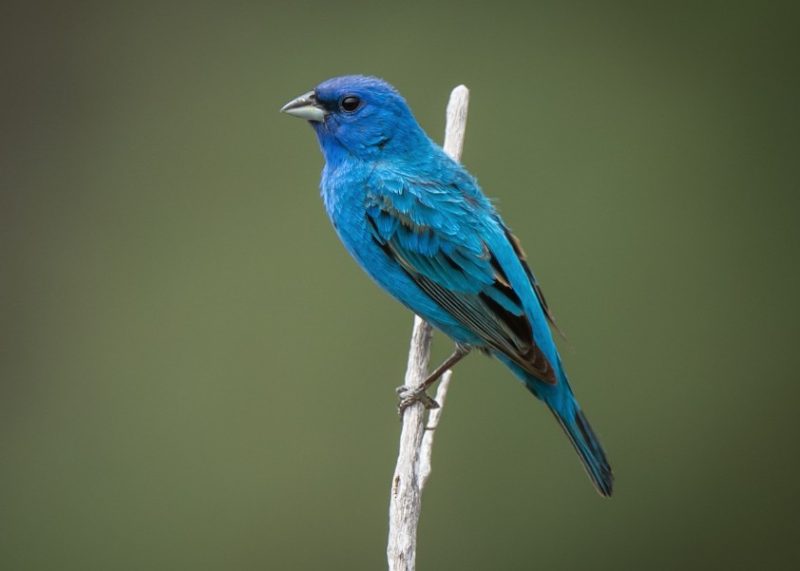
The Indigo Bunting is a small songbird celebrated for its brilliant, deep blue plumage in males, which shines vividly under sunlight. Females, in contrast, are mostly brown with subtle blue hints on their wings and tail, making them more camouflaged. They are compact birds measuring about 4.5 to 5 inches in length, known for their delicate yet striking appearance.
In New Jersey, Indigo Buntings prefer shrubby edges, roadsides, and open fields where they forage and sing. These birds are primarily seed and insect eaters, feeding on grasshoppers, caterpillars, and seeds from weeds and grasses. Their vibrant song is a common melodic feature during the breeding season, often heard at dawn and dusk.
Indigo Buntings are migratory, traveling mostly at night to their wintering grounds in Central and South America. Their ability to navigate by starlight is well documented. In New Jersey’s summer months, they are a favorite among birdwatchers due to their vivid color and cheerful song, contributing to the state’s rich bird diversity.
Tree Swallow (Tachycineta bicolor)
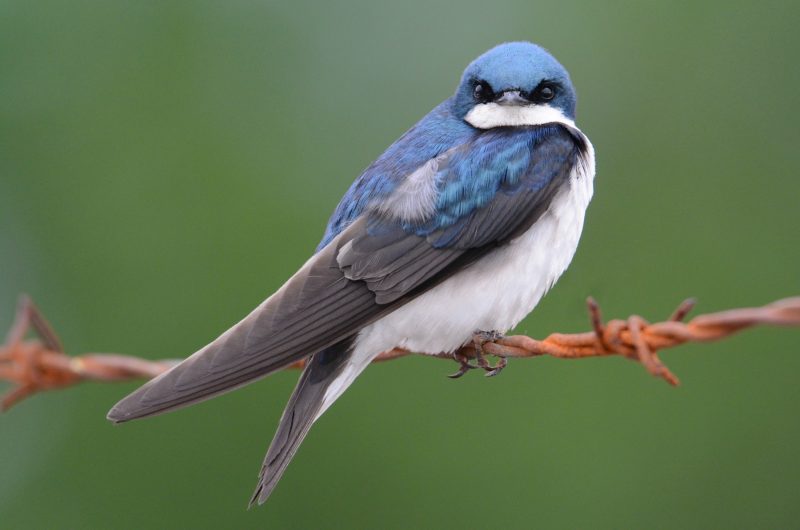
The Tree Swallow is a small, agile bird recognized by its iridescent blue-green upperparts and bright white underparts. Adults typically measure about 5 to 6 inches long and have a slender body and pointed wings that aid their swift, acrobatic flight. Their glossy plumage often gleams in sunlight, making them easy to identify when seen in flight.
These swallows prefer open woodlands, wetlands, and fields near water bodies in New Jersey. They nest in tree cavities or nest boxes and are known for their aerial insect hunting skills. Their diet consists mainly of flying insects such as flies, mosquitoes, and beetles, which they catch mid-air while gliding over ponds, marshes, and open fields.
Tree Swallows are highly social and often form large nesting colonies in suitable habitats. Their graceful flight and distinctive calls make them a common sight during spring and summer in New Jersey. Their presence is an important indicator of healthy wetland ecosystems where insects abound.
Purple Martin (Progne subis)
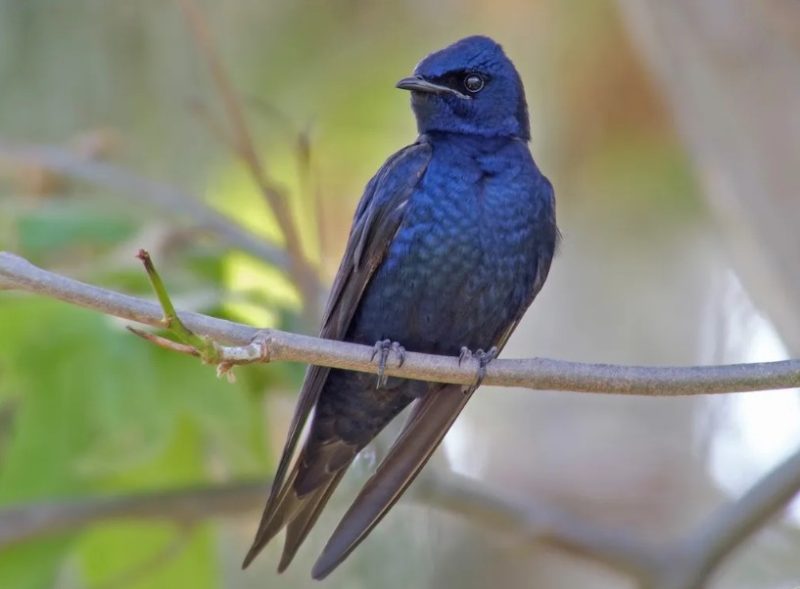
The Purple Martin is the largest swallow species in North America, measuring around 7 to 8 inches in length. Males boast glossy, deep blue feathers with a subtle purplish sheen that can appear almost iridescent in sunlight. Females and juveniles have duller grayish-blue tones, making the males strikingly vibrant by comparison.
Purple Martins in New Jersey favor open habitats near water and are closely associated with man-made structures such as martin houses and gourds provided by bird enthusiasts. These birds are skilled fliers that capture flying insects on the wing, including mosquitoes, dragonflies, and flying ants, which form the bulk of their diet.
The species is famous for its graceful and fast flight, often seen swooping over ponds, fields, and suburban areas in New Jersey during breeding season. Their reliance on human-provided nesting sites has made them a symbol of community-based conservation, with many residents helping to maintain martin houses to support their populations.
Barn Swallow (Hirundo rustica)
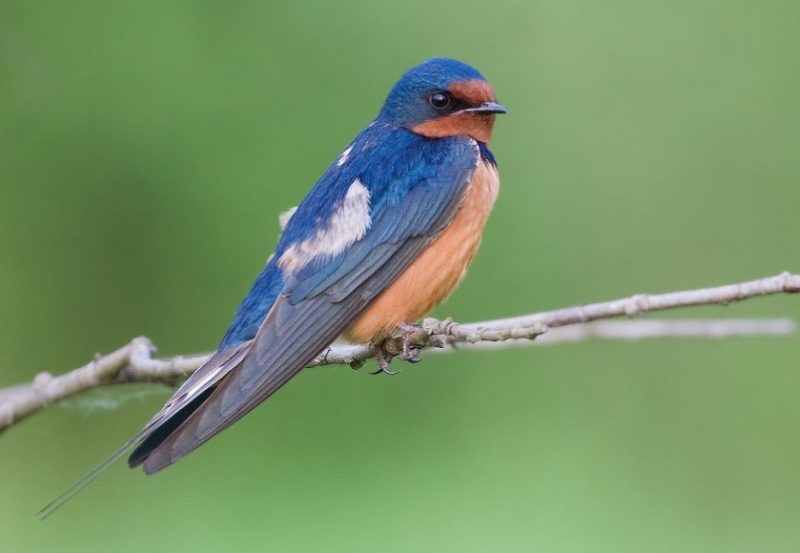
The Barn Swallow is easily recognized by its metallic blue upperparts and deeply forked tail, which gives it a graceful and agile appearance in flight. It measures about 7 inches in length and has a reddish-brown throat and forehead, contrasting with its shiny blue body. This bird’s streamlined shape helps it maneuver quickly as it catches insects on the wing.
In New Jersey, Barn Swallows commonly build their nests on man-made structures such as barns, bridges, and under eaves, often using mud pellets to construct their cup-shaped nests. Their preference for open spaces near water or fields makes these nesting sites ideal for hunting flying insects. Their presence is often a sign of healthy insect populations in rural and suburban areas.
Barn Swallows feed almost exclusively on flying insects like flies, beetles, and wasps, which they capture mid-air with remarkable skill. They are frequently seen swooping low over fields, roads, or water surfaces, darting swiftly and often performing impressive aerial acrobatics. Their cheerful chirping calls accompany their energetic flight as they forage throughout the day.
Cliff Swallow (Petrochelidon pyrrhonota)
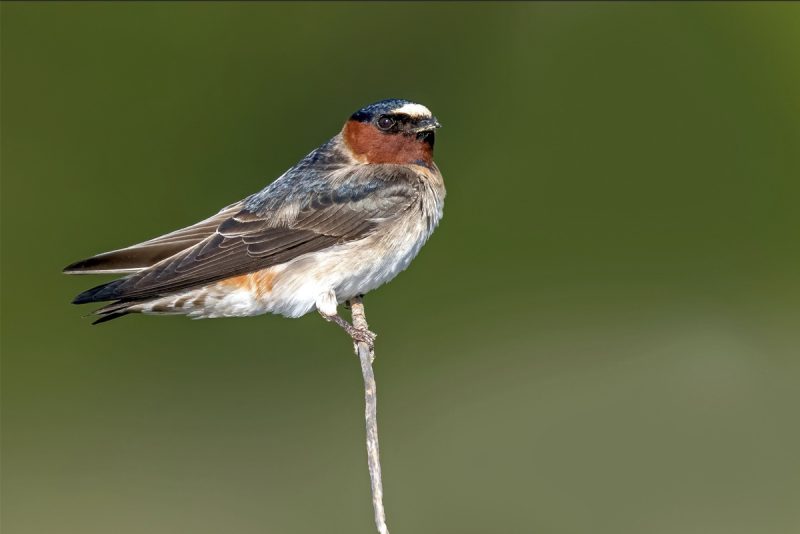
Cliff Swallows have distinctive blue-black upperparts and a pale orange face and rump, creating a striking color combination. They measure around 5.5 to 6 inches long and have a squared tail, which differs from the Barn Swallow’s forked tail. Their small size and gregarious nature make them easy to identify when in large colonies.
These birds are highly social and prefer to nest in dense colonies built from mud on vertical surfaces such as under bridges, cliffs, and overhangs in New Jersey. Their mud nests are often clustered closely together, sometimes numbering in the hundreds. This colonial nesting behavior offers protection from predators and harsh weather.
Cliff Swallows feed exclusively on flying insects, capturing them during fast, agile flights. Their social lifestyle extends to foraging, where groups of swallows may feed together. They are common during spring and summer months across New Jersey, especially near water bodies and open fields where insects abound.
Belted Kingfisher (Megaceryle alcyon)
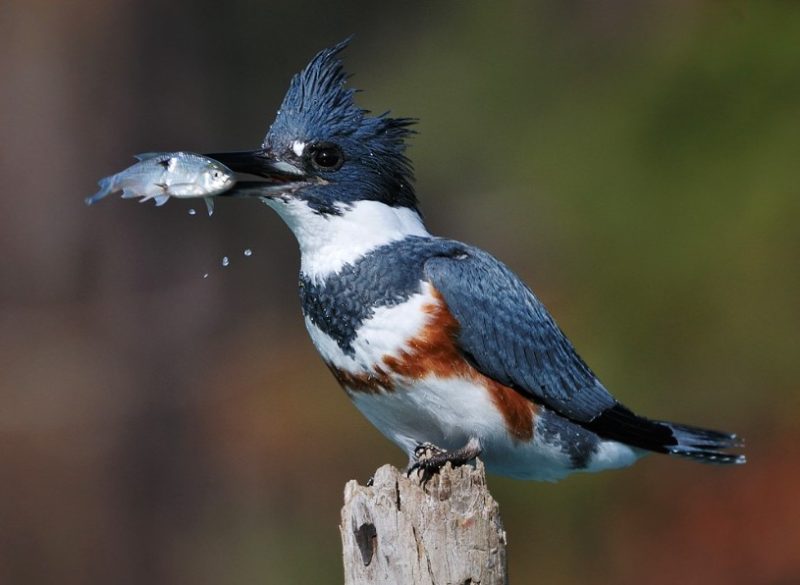
The Belted Kingfisher is a medium-sized bird easily identified by its bluish-gray plumage and prominent white collar around the neck. It measures about 11 to 14 inches in length and features a large head with a shaggy crest. Its white underparts are marked with a dark blue breast band in males and an additional rusty band in females.
This species is typically found near freshwater habitats such as rivers, lakes, and ponds throughout New Jersey. Belted Kingfishers nest in burrows they dig into sandy banks or soil near water. Their loud, rattling call is often heard before the bird is seen, alerting observers to their presence along shorelines.
Belted Kingfishers are expert fish hunters; they hover briefly before diving headfirst into the water to catch fish with their sharp beaks. They also eat crustaceans and aquatic insects. Their hunting technique and striking call make them a favorite among birdwatchers near New Jersey’s waterways.
Blue Grosbeak (Passerina caerulea)
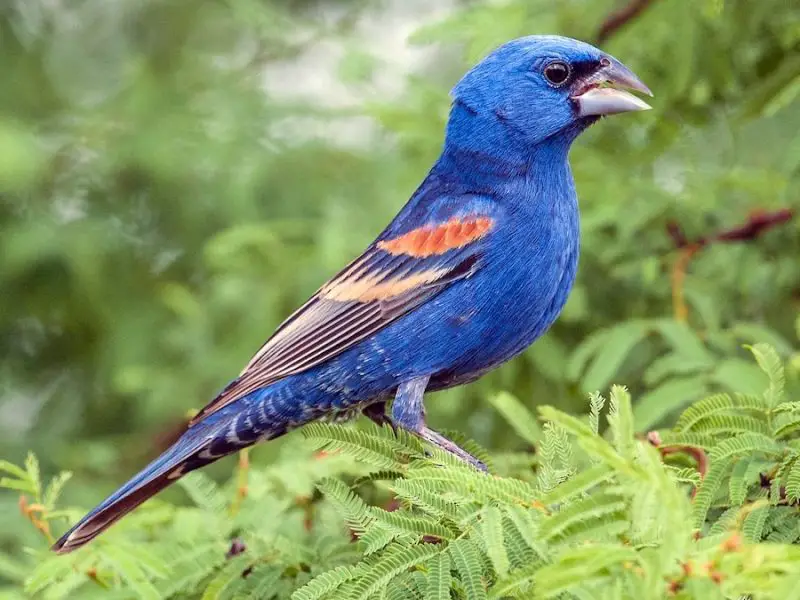
Male Blue Grosbeaks boast a rich deep blue plumage accented with two chestnut wing bars, while females are primarily brown with subtle blue highlights on the wings and tail. These birds are about 6 to 7 inches long, with a thick, strong bill well adapted for cracking seeds and catching insects.
In New Jersey, Blue Grosbeaks prefer shrubby areas, woodland edges, and overgrown fields. They favor habitats that offer dense brush for nesting and ample open spaces for foraging. These birds build cup-shaped nests low in shrubs or small trees, hidden from predators.
Their diet consists of seeds, grains, and a variety of insects such as grasshoppers and beetles. Blue Grosbeaks are known for their rich, melodious song, which they deliver from exposed perches. Their vibrant color and vocal presence make them a sought-after species for birders in New Jersey’s summer months.
Cerulean Warbler (Setophaga cerulea)
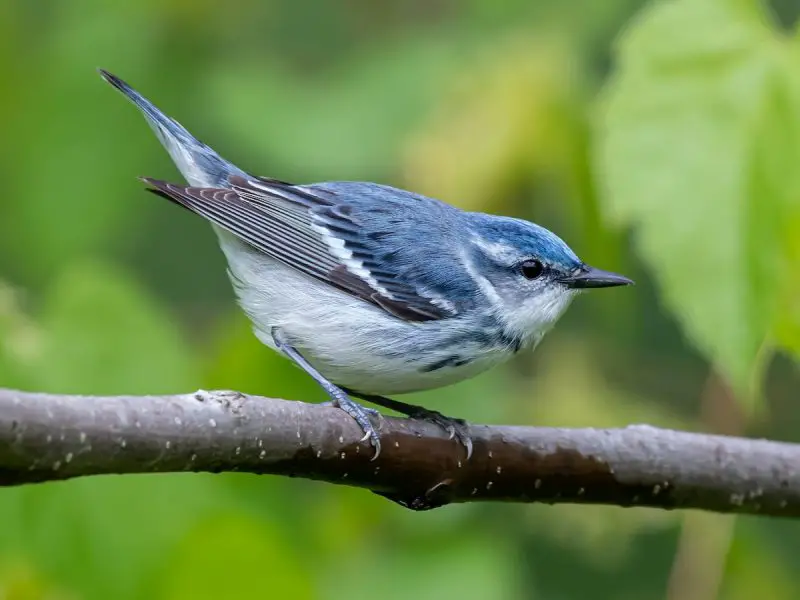
The Cerulean Warbler is a small and striking migratory songbird. Males have pale sky-blue upperparts with a white underside and thin black streaks on the sides, while females are a duller greenish-blue with a creamy white underside. They are about 4.3 inches long, and their delicate size makes them harder to spot in the tree canopy.
In New Jersey, this species is typically found in mature deciduous forests, especially in areas with tall, old-growth trees. They favor high perches where males sing persistently to defend territory. Due to forest fragmentation, their preferred habitat has become increasingly rare, leading to concern over declining populations.
Cerulean Warblers migrate through New Jersey during spring and fall. Their buzzy, musical song is often heard before they are seen. Conservationists are monitoring this species closely due to habitat loss both in North America and their South American wintering grounds.
Mountain Bluebird (Sialia currucoides)
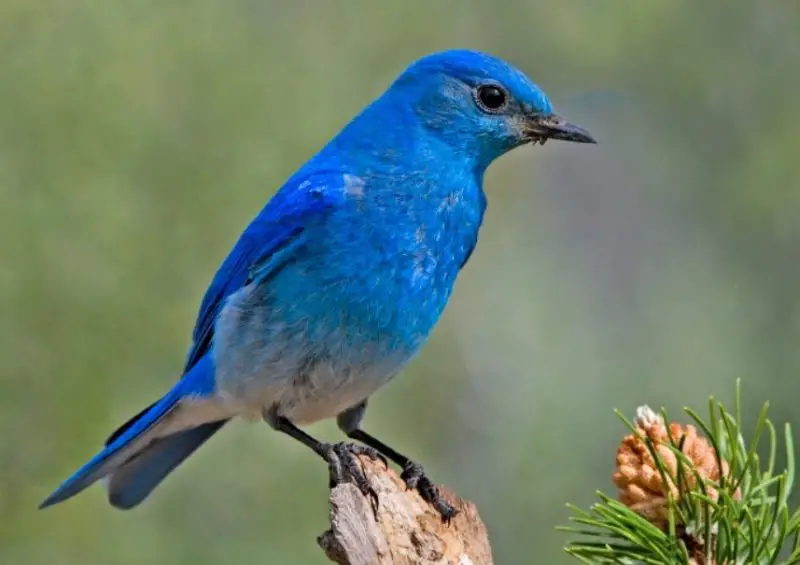
The Mountain Bluebird is a stunning species with bright, almost neon-blue plumage across its entire body, lacking the reddish chest seen in other bluebirds. Males are especially vivid, while females are duller with bluish wings and tail. They measure around 7 inches long and are slightly more slender than Eastern Bluebirds.
This species is native to open grasslands, alpine meadows, and mountainous terrain in the western United States. Although rarely seen in New Jersey, a few individuals may appear during migration or vagrancy events, making sightings in the state a special treat for local birders.
Mountain Bluebirds feed on insects and are commonly seen flying low over open fields as they hunt. While not a regular resident in New Jersey, their appearance is occasionally reported in open fields during spring or fall migration. Their rarity in the region makes them a highlight for birdwatchers.
Black-throated Blue Warbler (Setophaga caerulescens)
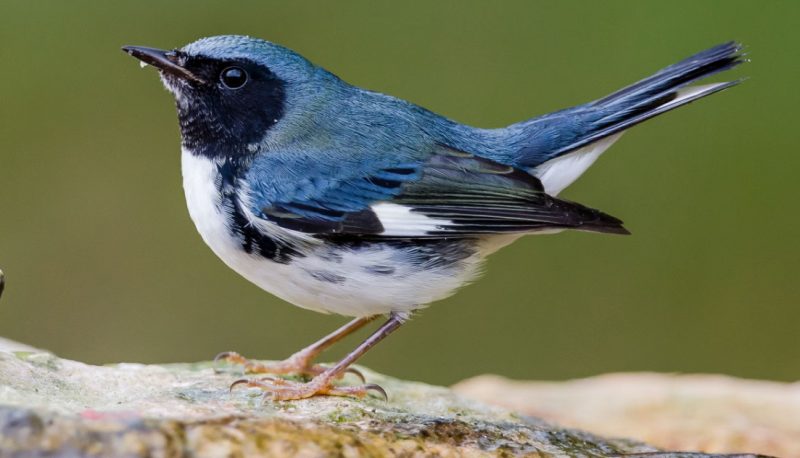
The Black-throated Blue Warbler is a striking bird, with males showing deep blue upperparts, black throats and faces, and clean white underparts. Females are more muted, with olive-gray coloring and a subtle pale eyebrow. These birds are about 5 inches long and compact in shape.
In New Jersey, they favor mixed hardwood forests with dense understory, especially in hilly or mountainous areas. These birds often stay low in the shrub layer while foraging, making them easier to observe than other canopy-dwelling warblers. They breed in the state during the warmer months.
This species is a neotropical migrant, wintering in the Caribbean. Their song is a soft, buzzy “zur zur zur zree,” which is frequently heard during spring and early summer. They feed on caterpillars, beetles, and other insects, and their presence signals healthy forest habitat.
Green Heron (Butorides virescens)
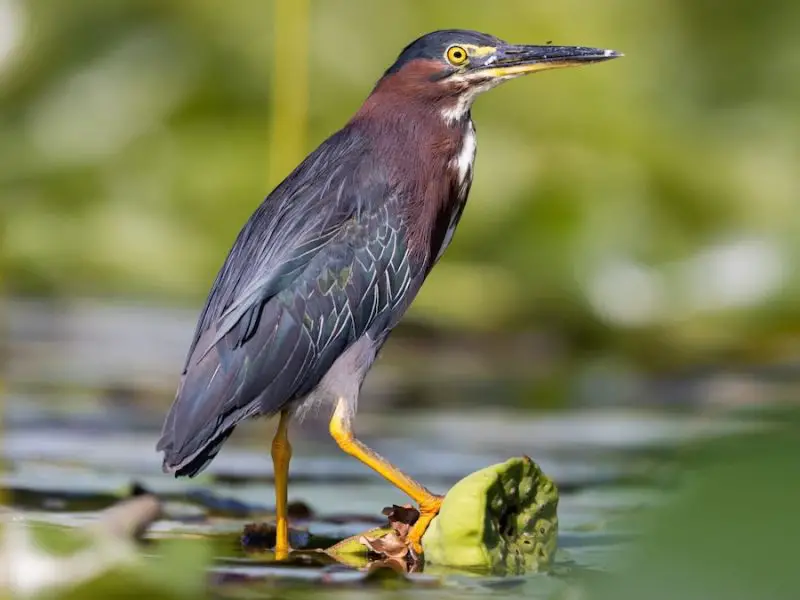
The Green Heron is a small and stocky wading bird with glossy greenish-blue feathers on its back and wings, a rich chestnut-colored neck, and yellow legs. It measures about 18 inches in length and has a thick neck and dagger-like bill perfect for catching prey.
In New Jersey, Green Herons are found in wetlands, ponds, and wooded swamps, often perched quietly along the water’s edge. Their secretive nature and stillness can make them difficult to spot, especially when they blend into the surrounding vegetation.
They are stealth hunters, waiting motionless before lunging forward to grab small fish, frogs, or insects. Occasionally, they use bait—such as dropping insects or twigs on the water—to lure fish within striking range, showcasing remarkable intelligence among wading birds.
Green-winged Teal (Anas crecca)
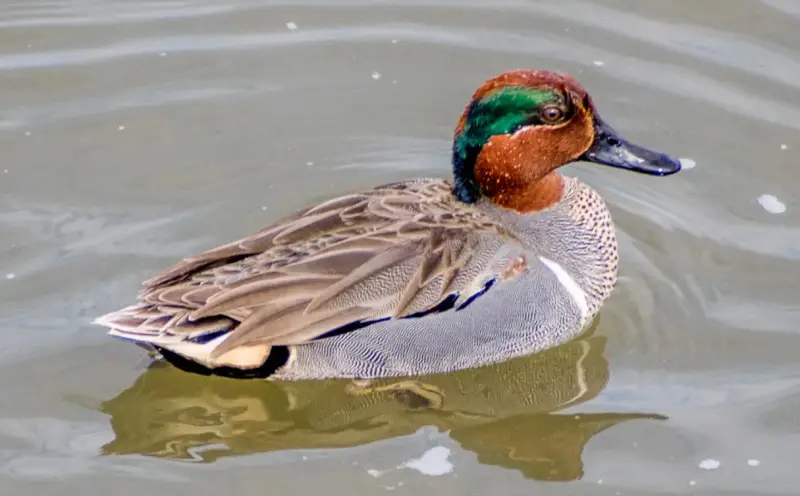
The Green-winged Teal is the smallest dabbling duck in North America, measuring around 12 to 15 inches. Males display a rich chestnut head with a shimmering green patch extending from the eye to the back of the head, while females are mottled brown with subtle markings.
In New Jersey, these ducks frequent freshwater marshes, shallow ponds, and tidal estuaries, especially during fall and spring migrations. They are often seen in flocks, dabbling in the shallows or resting near the edges of wetlands.
These teals feed on seeds, aquatic vegetation, and small invertebrates. When flushed, they take off swiftly with a whistling sound and show the vivid green patch on their wings, making them easier to identify in flight. Their small size and quick movements make them both charming and challenging to observe.
Common Loon (Gavia immer)
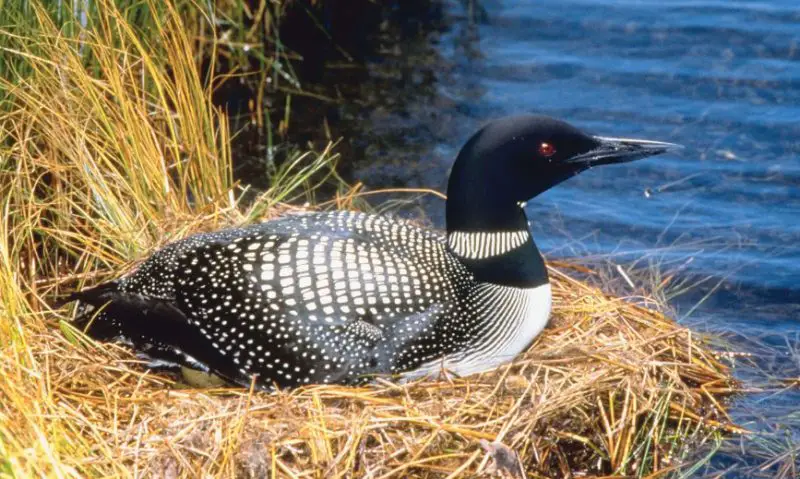
The Common Loon is a large, powerful diving bird, known for its haunting calls and striking breeding plumage of black-and-white checks with iridescent blue-green sheens on the head and neck. Adults can grow up to 32 inches long, with a wingspan of over 50 inches.
In New Jersey, they are most often seen during migration and in winter on large lakes, reservoirs, and coastal bays. While they do not typically breed in the state, they are a regular presence during colder months, resting and foraging in deeper, clean waters.
Loons are exceptional divers, using their large webbed feet to chase fish underwater. Their eerie, flute-like calls carry across lakes and are most commonly heard on northern breeding grounds. Spotting one on a quiet New Jersey lake in winter is a memorable experience for birders.
Northern Flicker (Colaptes auratus)
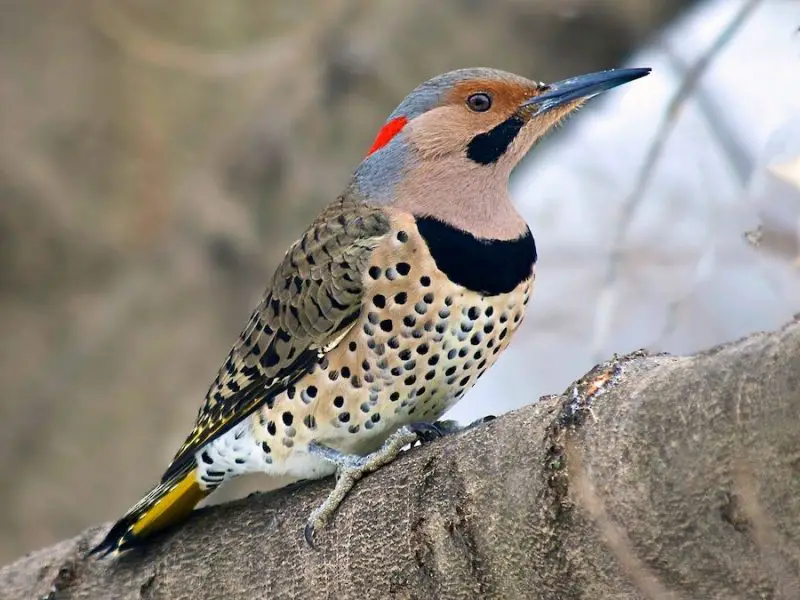
The Northern Flicker is a large woodpecker with a unique appearance. Its body is primarily tan with black spots on the belly, a black crescent on the chest, and a gray head. Eastern populations display bright yellow underwings and undertails, which flash during flight and may appear bluish in some light.
They inhabit forests, open woodlands, parks, and suburban areas throughout New Jersey. Unlike most woodpeckers, Northern Flickers often forage on the ground, using their long tongues to extract ants and beetles from the soil.
These birds are commonly seen perched on trees or telephone poles, and they drum on metal or wood to communicate during the breeding season. Their call is a loud, repeated “wick-a-wick-a-wick,” and their unique foraging habits and colorful flight feathers make them easy to identify once spotted.
FAQs About Blue Birds in New Jersey
What are the most common blue birds in New Jersey?
Some of the most common blue birds in New Jersey include the Eastern Bluebird, Blue Jay, Tree Swallow, and Indigo Bunting. These species can be found in various habitats ranging from suburban parks to open woodlands and wetlands across the state.
When is the best time to see blue birds in New Jersey?
The best time to observe blue birds in New Jersey is during the spring and summer months. Many species, such as warblers and swallows, migrate north in the spring to breed and are most active in the early morning and late afternoon.
Where can I go birdwatching to find blue birds in New Jersey?
Popular birdwatching spots for blue birds in New Jersey include the Great Swamp National Wildlife Refuge, Cape May Point State Park, Duke Farms, and the Delaware Water Gap. These areas offer ideal habitats like open fields, forest edges, and wetlands that attract blue bird species.
How can I attract blue birds to my backyard in New Jersey?
To attract blue birds to your yard, provide native trees and shrubs, a clean water source, and bird feeders with mealworms, suet, or sunflower seeds. Installing nest boxes, especially for Eastern Bluebirds and Tree Swallows, can also increase the chance of attracting breeding pairs.
Are any blue birds in New Jersey endangered or threatened?
Yes, some species like the Cerulean Warbler are considered threatened due to habitat loss and fragmentation. Conservation efforts in New Jersey, such as habitat protection and nest box programs, have helped stabilize or increase populations of several blue bird species.
Do blue birds stay in New Jersey year-round?
Some blue birds, like the Blue Jay and Eastern Bluebird, can be found in New Jersey throughout the year, especially in southern parts of the state. Others, like the Indigo Bunting and warblers, are migratory and only present during the breeding season or migration periods.
What do blue birds eat in New Jersey?
Blue birds in New Jersey have varied diets depending on the species. Many eat insects like beetles, caterpillars, and flies during warmer months. Others also eat seeds, berries, and nuts, especially during winter when insects are scarce.
Are Mountain Bluebirds native to New Jersey?
Mountain Bluebirds are not native to New Jersey and are considered rare visitors. They typically inhabit western North America but have been occasionally spotted in the state during migration, usually in open fields or grasslands.

